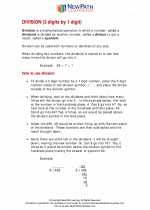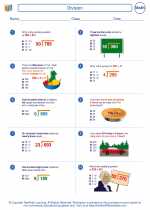Straight Angle
A straight angle is an angle that measures 180 degrees. It is formed by a straight line, and it can be thought of as a "half-turn."
Characteristics of a Straight Angle
- Angle Measurement: A straight angle always measures 180 degrees.
- Linearity: It is formed by a straight line, and it does not have any curvature.
- Half-Turn: A straight angle represents a half-turn or a complete reversal in direction.
Examples of Straight Angles
Some common examples of straight angles include:
- A perfectly straight line (180 degrees).
- The angle formed by the hands of a clock at 6 o'clock (180 degrees).
- The angle formed by the opposite sides of a straight-sided polygon (e.g., rectangle, parallelogram) when extended (180 degrees).
Properties of Straight Angles
Some important properties of straight angles include:
- Sum of Angles: When two angles form a straight angle, the sum of their measures is 180 degrees.
- Adjacent Angles: Two angles are considered adjacent when they share a common vertex and side. When two adjacent angles form a straight angle, they are called supplementary angles.
Study Tips for Straight Angles
To understand and work with straight angles effectively, consider the following study tips:
- Visualize a straight angle as a half-circle or half-turn, which can help you remember its measurement of 180 degrees.
- Practice identifying and measuring straight angles in different geometric figures and real-world examples.
- Understand the concept of supplementary angles and how they relate to straight angles.
- Use a protractor to measure and draw straight angles accurately.
Remember that understanding straight angles is essential for various mathematical and geometric applications, including solving problems related to angles, shapes, and spatial reasoning.
.◂Math Worksheets and Study Guides Sixth Grade. Division
Study Guide Division
Division  Worksheet/Answer key
Worksheet/Answer key Division
Division  Worksheet/Answer key
Worksheet/Answer key Division
Division  Worksheet/Answer key
Worksheet/Answer key Division
Division 

 Worksheet/Answer key
Worksheet/Answer key
 Worksheet/Answer key
Worksheet/Answer key
 Worksheet/Answer key
Worksheet/Answer key

The resources above cover the following skills:
Connections to the Grade 6 Focal Points (NCTM)
Number and Operations: Students' work in dividing fractions shows them that they can express the result of dividing two whole numbers as a fraction (viewed as parts of a whole). Students then extend their work in grade 5 with division of whole numbers to give mixed number and decimal solutions to division problems with whole numbers. They recognize that ratio tables not only derive from rows in the multiplication table but also connect with equivalent fractions. Students distinguish multiplicative comparisons from additive comparisons.